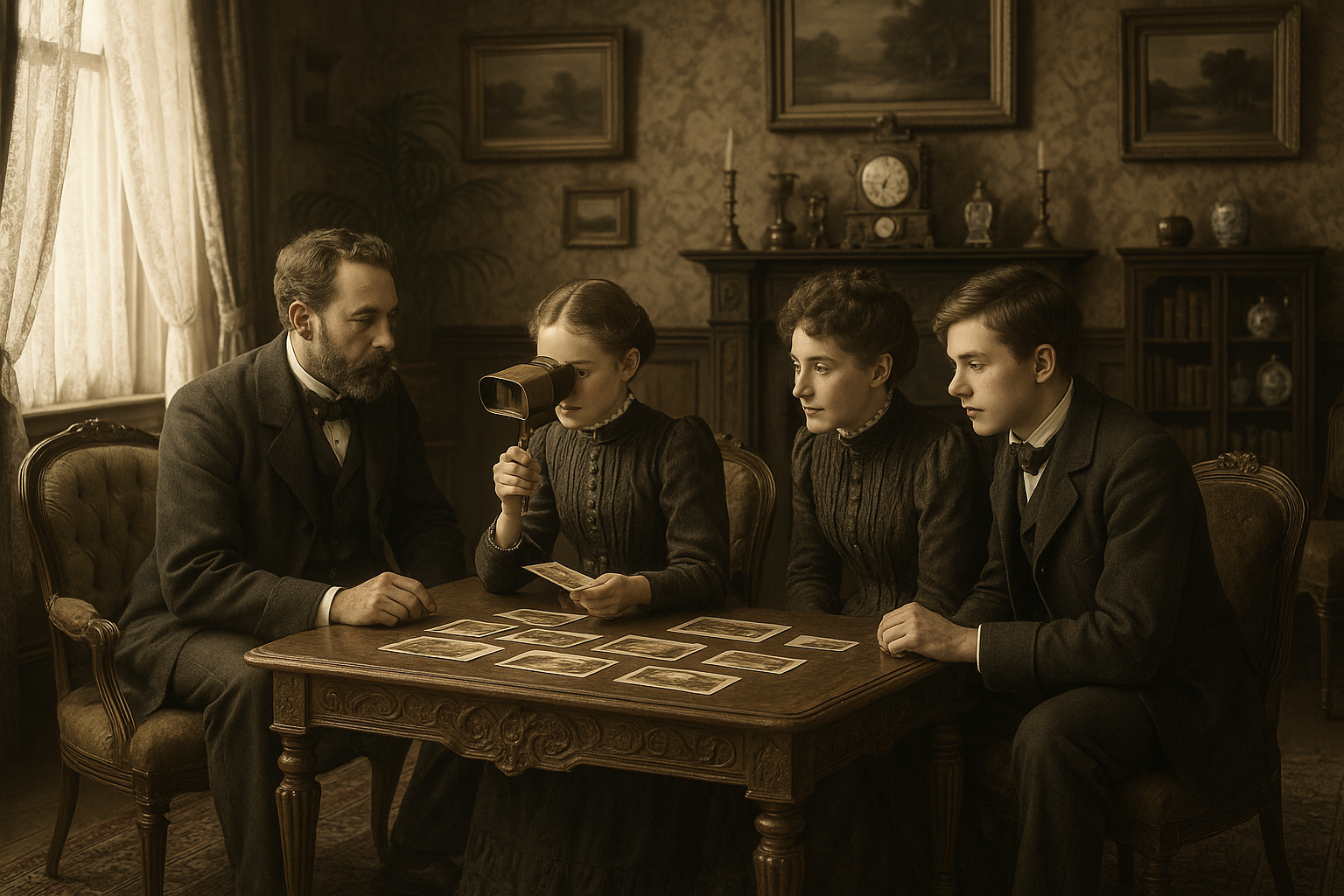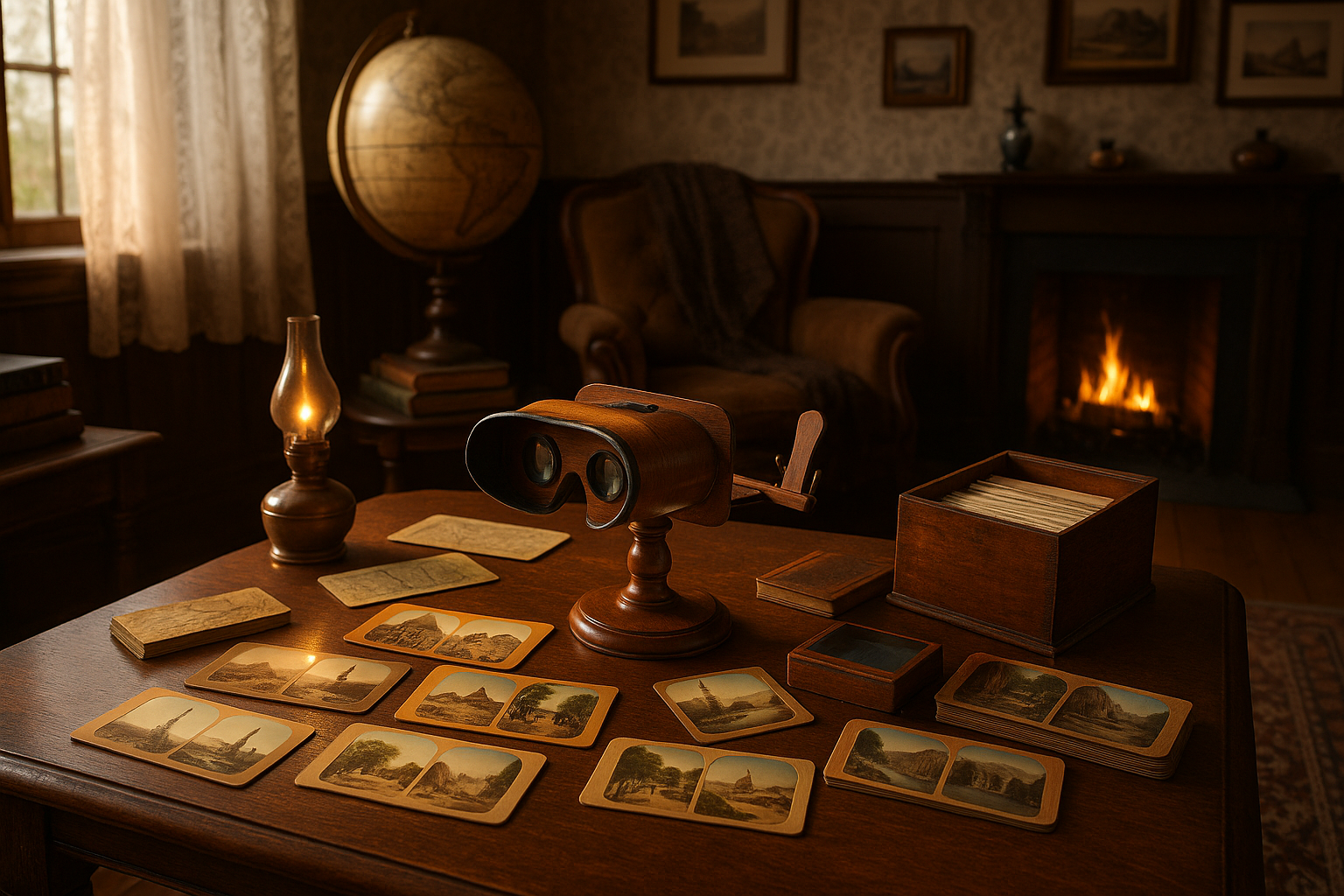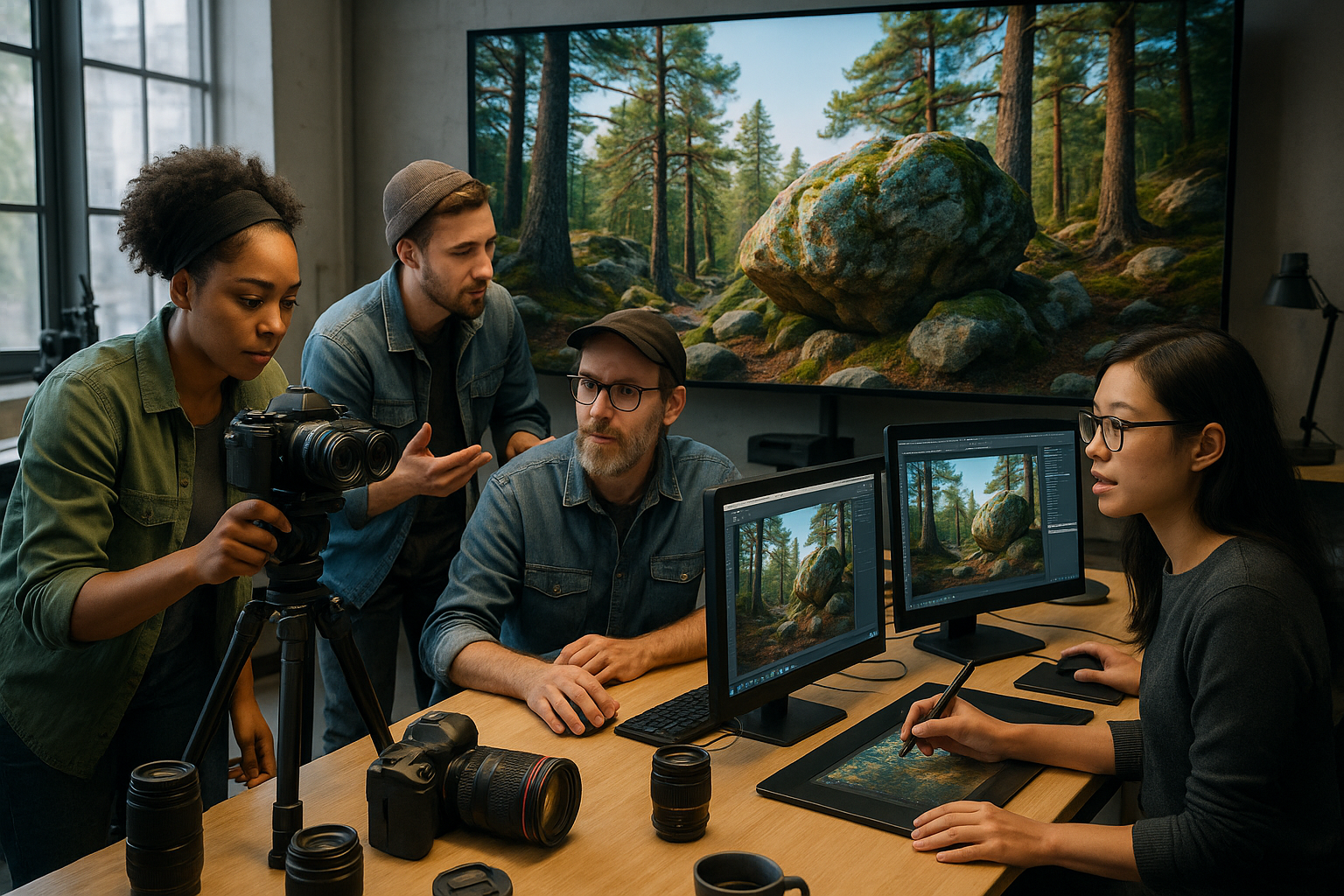In a world where digital photography reigns supreme, and instant gratification is just a tap away, there lies a forgotten realm filled with mystery, nostalgia, and unparalleled artistry—the darkroom. This enigmatic space, with its soft red glow and the faint scent of chemicals, was once the heartbeat of photography, where moments captured on film were transformed into tangible works of art. For many, the darkroom remains a symbol of a bygone era, but for those who dare to explore its secrets, it offers a treasure trove of techniques and skills that can elevate modern photography to breathtaking heights. 📸
Welcome to an immersive journey through the historic darkroom techniques that have shaped the art of photography for generations. This article will delve into the captivating world of analog processes, exploring how these age-old methods can bring a unique depth and emotion to your images that digital processes often struggle to replicate. From the alluring allure of black and white film to the magical moments of watching an image slowly appear on a blank sheet of paper, the darkroom offers an experience that is both creatively satisfying and deeply meditative.
In the pages that follow, we will uncover the secrets behind some of the most iconic darkroom techniques, such as dodging and burning, which allow photographers to manipulate light and shadow to create images with dramatic contrast and emotion. We’ll also explore the intriguing method of cyanotype printing, a process that produces stunning blue-hued photographs that evoke a sense of timelessness and wonder. Moreover, we’ll discuss the resurgence of interest in these techniques among contemporary photographers, who are blending the old with the new to craft images that captivate and inspire.
As we embark on this exploration, prepare to be inspired by stories of legendary photographers who mastered the darkroom’s secrets to leave a lasting legacy. You’ll gain insights into how these techniques can be applied to modern photography, offering fresh perspectives and possibilities. Whether you’re a seasoned photographer looking to expand your skillset or a curious novice eager to dive into the rich history of your craft, this article promises to enlighten and entertain. So, grab your apron, ready your tongs, and step into the captivating world of historic darkroom techniques, where the past and present converge in a dance of light, shadow, and imagination. 🌟
The Allure of Historic Darkroom Techniques
Photography has undergone a dramatic evolution over the years, with digital technology dominating the current landscape. However, the historic darkroom techniques, often shrouded in mystery and nostalgia, continue to captivate photographers and enthusiasts alike. These techniques, which date back to the 19th and early 20th centuries, offer a tactile and hands-on approach to image-making that many find irresistible.
One of the most enchanting aspects of these darkroom techniques is their ability to produce unique, one-of-a-kind images. Unlike digital photography, where images can be replicated with precision, darkroom techniques often result in slight variations with each print. This unpredictability is part of the magic, as it allows photographers to create truly unique works of art. Techniques such as cyanotype, platinum printing, and daguerreotype offer a range of tonal qualities and textures that are difficult to achieve with modern methods.
Moreover, the process of working in a darkroom itself is a meditative experience. The dim red light, the smell of chemicals, and the slow, deliberate actions required to develop an image contribute to a sense of craftsmanship and artistry. It’s a reminder of photography’s roots and the skill required to master these techniques. For those willing to embrace the challenges and intricacies of darkroom work, the rewards are immense.
Comparing Digital and Darkroom Photography
To better understand the unique qualities of historic darkroom techniques, it’s helpful to compare them with modern digital photography. While digital offers convenience and efficiency, darkroom methods require a different set of skills and resources. Here’s a table that outlines some key differences:
| Aspect | Digital Photography | Darkroom Techniques |
|---|---|---|
| Accessibility | Widely accessible with smartphones and digital cameras | Requires specialized equipment and chemicals |
| Time Investment | Instant results with editing options available | Time-consuming with each step requiring precision |
| Image Quality | High resolution and clarity | Unique textures and tonal ranges |
| Artistic Control | Extensive editing and manipulation capabilities | Hands-on control over the development process |
Both approaches have their merits, and many photographers find value in incorporating elements of both digital and darkroom techniques in their work. Whether it’s the instant gratification of digital or the deliberate pace of darkroom, the choice depends on the photographer’s vision and intent.
For a visual exploration of how these techniques compare, watch this informative video on YouTube: “Darkroom vs. Digital: Finding the Right Balance” by Photography Expert Channel. 📹
Key Darkroom Techniques and Their Modern-Day Applications
Historic darkroom techniques have not only stood the test of time but have also found new life in contemporary photography. Each method offers distinct characteristics that can enhance creative expression. Let’s delve into some of the most prominent techniques and explore their applications today.
Cyanotype
Cyanotype, known for its striking blue and white imagery, is one of the oldest photographic processes. Developed in the mid-19th century, it involves coating paper with a light-sensitive solution and exposing it to sunlight. The resulting images have a dreamlike quality, reminiscent of vintage postcards.
Today, cyanotype is celebrated for its artistic potential. Artists and photographers often use it to create abstract compositions or to add a vintage touch to their work. The technique’s simplicity and accessibility make it an excellent starting point for those new to darkroom processes. Cyanotype can be used on a variety of surfaces, including fabric and wood, broadening its creative applications.
Platinum Printing
Platinum printing is revered for its unparalleled tonal range and archival quality. It involves coating paper with a solution of platinum and palladium salts and exposing it to ultraviolet light. The resulting images are rich in detail, with a luminous quality that sets them apart from other photographic prints.
Despite its complexity, platinum printing is still practiced by dedicated artisans who value its aesthetic qualities. The process is particularly favored in fine art photography, where image longevity and depth are paramount. Photographers seeking to produce gallery-quality prints often turn to platinum printing to achieve a timeless, elegant look.
Daguerreotype
The daguerreotype, developed in the early 19th century, was one of the first publicly available photographic processes. It produces highly detailed images on a polished silver plate. Although largely replaced by more practical methods, daguerreotypes are cherished for their historical significance and visual impact.
Today, there is a resurgence of interest in creating modern daguerreotypes. Enthusiasts appreciate the challenge and craftsmanship involved in producing these images. Daguerreotypes offer a window into the past, capturing subjects with a haunting, ethereal quality that is difficult to replicate with modern technology.
Embracing the Challenges and Rewards of Darkroom Photography
Working with historic darkroom techniques presents unique challenges, but it is also incredibly rewarding. The learning curve can be steep, requiring patience and persistence. However, for those willing to invest the time and effort, the results are profoundly satisfying.
Overcoming Technical Challenges
Darkroom photography demands a thorough understanding of chemical processes, exposure times, and environmental conditions. Mistakes are part of the learning process, and each error provides valuable insights. Photographers must be prepared for trial and error, especially when experimenting with new techniques.
- Attention to detail is crucial in every step, from mixing chemicals to timing exposures.
- Maintaining a clean and organized workspace minimizes the risk of contamination.
- Recording experiments and results helps refine techniques and improve outcomes.
Despite these challenges, the tangible nature of darkroom work can be deeply satisfying. The ability to physically craft an image from start to finish instills a sense of accomplishment and connection to the art form.
The Joy of Creative Expression
Darkroom techniques offer a level of creative freedom that is often absent in digital photography. The ability to manipulate chemicals and exposure times allows photographers to experiment with different aesthetic effects. This hands-on approach encourages spontaneity and innovation, leading to unexpected and exciting results.
Moreover, the tactile experience of working with physical materials can inspire new artistic directions. Photographers often find themselves exploring new themes and styles, inspired by the unique qualities of darkroom images. This creative exploration is a major draw for many artists, who appreciate the opportunity to push the boundaries of their work.
Building a Community of Enthusiasts
The resurgence of interest in historic darkroom techniques has led to the formation of vibrant communities of photographers and artists. These groups provide support, share knowledge, and celebrate the art of darkroom photography. Workshops, online forums, and social media platforms allow enthusiasts to connect, collaborate, and showcase their work.
For those interested in exploring darkroom photography, engaging with these communities can provide invaluable resources and inspiration. Learning from experienced practitioners and participating in discussions can help newcomers navigate the complexities of the craft.
Ultimately, the world of historic darkroom techniques offers a rich tapestry of opportunities for artistic expression. Whether you’re drawn to the tactile process, the unique visual outcomes, or the sense of community, darkroom photography remains a compelling and rewarding pursuit.

Conclusion
Conclusion: Unveiling the Secrets of Historic Darkroom Techniques for Captivating Photography Results
As we draw to a close on this enlightening journey through the enchanting realm of historic darkroom techniques, it’s imperative to reflect on the myriad insights we’ve uncovered. Delving into the meticulous processes of the darkroom not only allows us to appreciate the artistry and dedication of past photographers but also equips us with timeless skills that can elevate modern photographic practices.
Throughout this exploration, we revisited the foundational elements of traditional photography, starting with the intricate processes of film development. The careful balance of chemicals and precise timing that defined this art form reveals a world where patience and skill converge to produce images that captivate and intrigue. Understanding these processes offers modern photographers a deeper appreciation for the medium and a renewed sense of creativity that digital methods sometimes lack.
In examining the importance of paper selection and exposure techniques, we highlighted how these choices impact the final image. The tactile quality of various papers, combined with deliberate exposure strategies, can significantly alter the mood and narrative of a photograph. Such knowledge empowers photographers to make informed decisions that enhance the storytelling potential of their work, fostering a more profound connection with their audience.
Furthermore, the exploration of dodging and burning techniques, pioneered in darkrooms, illustrates the power of these methods in guiding viewer focus and emphasizing specific elements within a photograph. By mastering these skills, photographers can wield light and shadow with precision, crafting images that are not only visually compelling but also rich in emotional depth.
The discussion on the role of toning and alternative processes, such as cyanotype and platinum printing, opened up a world of creative possibilities. These techniques offer unique aesthetic qualities that can transform photographs into striking works of art. By experimenting with these methods, photographers can discover new dimensions of expression and creativity, ensuring their work stands out in an ever-evolving digital landscape.
Revisiting the darkroom also reconnects us with the tactile nature of photography. In an age dominated by screens and pixels, the physical act of developing a print can be a meditative experience, fostering a deeper appreciation for the craft. This hands-on approach not only nurtures a sense of craftsmanship but also encourages a mindful engagement with the art form, enriching the photographer’s journey and artistic output.
The significance of these historic techniques extends beyond their practical application. They serve as a testament to the ingenuity and perseverance of early photographers, whose contributions laid the groundwork for the visual storytelling we cherish today. By honoring and preserving these practices, we ensure that the legacy of photography’s pioneers continues to inspire future generations.
As we conclude, it’s vital to recognize the enduring relevance of darkroom techniques in contemporary photography. Embracing these methods can breathe new life into your work, offering a distinctive edge that sets it apart in a saturated market. Whether you are a seasoned professional or an enthusiastic amateur, incorporating these practices can unlock a new realm of creative potential and artistic fulfillment.
We encourage you to embark on your own journey of discovery and experimentation. Revisit the darkroom, immerse yourself in the tactile joy of developing prints, and explore the myriad possibilities these techniques offer. Share your experiences and insights with others, fostering a community of learning and inspiration that transcends digital boundaries.
In an era where instant gratification often overshadows the beauty of the process, let us not forget the profound satisfaction that comes from creating something with our hands. As you apply these timeless techniques, may you find inspiration and joy in the art of photography, crafting images that resonate with depth and authenticity.
We invite you to join the conversation, share your thoughts, and inspire others with your work. Comment below with your experiences and insights, and consider sharing this article with fellow photography enthusiasts who might find value in these historic techniques. Together, let’s celebrate the rich legacy of the darkroom and continue to push the boundaries of photographic artistry.
For further reading and to deepen your understanding of these techniques, you may explore resources such as the International Center of Photography or the George Eastman Museum. These institutions offer a wealth of information and inspiration for photographers eager to delve into the art and history of photography.
In closing, may this journey into the enigmatic world of historic darkroom techniques inspire you to create captivating and meaningful photography. Embrace the art, honor the craft, and let your creativity shine through every image you capture. 📸✨
Toni Santos is a visual historian and artisan whose creative lens is captivated by the forgotten marvels of antique optical devices. Through his thoughtful storytelling, Toni revives the instruments that once transformed light into wonder—camera obscuras, magic lanterns, kaleidoscopes, and other ingenious tools that shaped our earliest visual imaginations.
His journey is rooted in a fascination with how humans have long sought to bend, reflect, and reveal the unseen. Whether tracing the mechanical poetry of 19th-century projectors or illustrating the tactile elegance of early lenses, Toni’s work invites us to see vision itself as an evolving art form.
Blending handcrafted design with historical inquiry, Toni brings to life the material soul of these devices—celebrating not just how they functioned, but what they meant. His creations and curated stories illuminate a world where science, illusion, and beauty were intricately linked through glass and brass.
As the curator of Vizovex, Toni shares detailed studies, reconstructed artifacts, and immersive content that help others rediscover the origins of visual technology and the magic of analog perception.
His work is a tribute to:
The craftsmanship behind early visual instruments
The wonder of seeing through the eyes of another century
The intersection of optics, art, and imagination
Whether you’re a collector, a designer, or someone drawn to the lost poetry of vision, Toni welcomes you into a world where light is a storyteller—one prism, one lens, one forgotten invention at a time.





